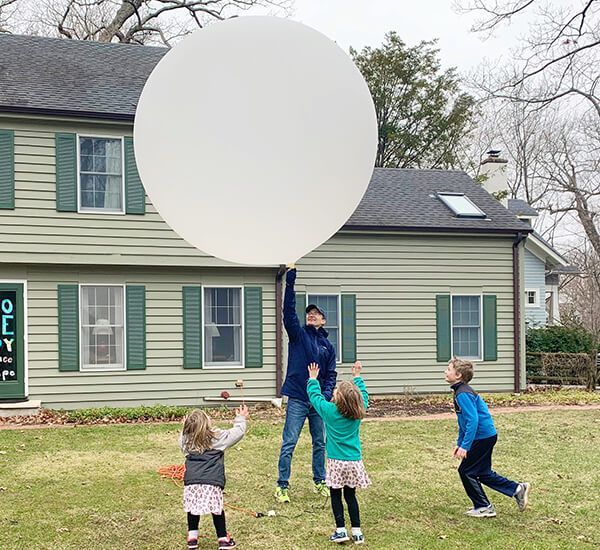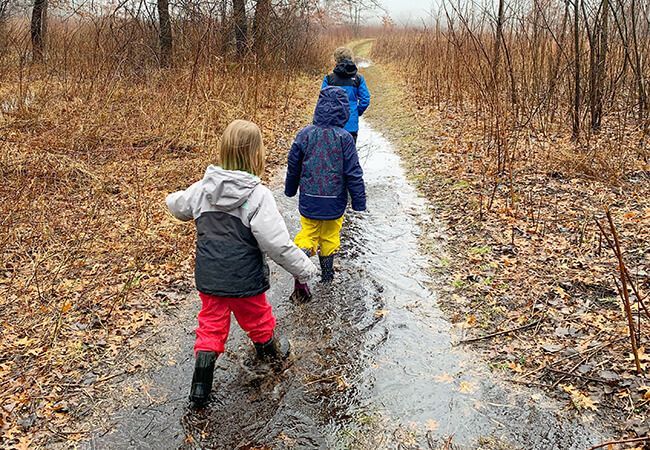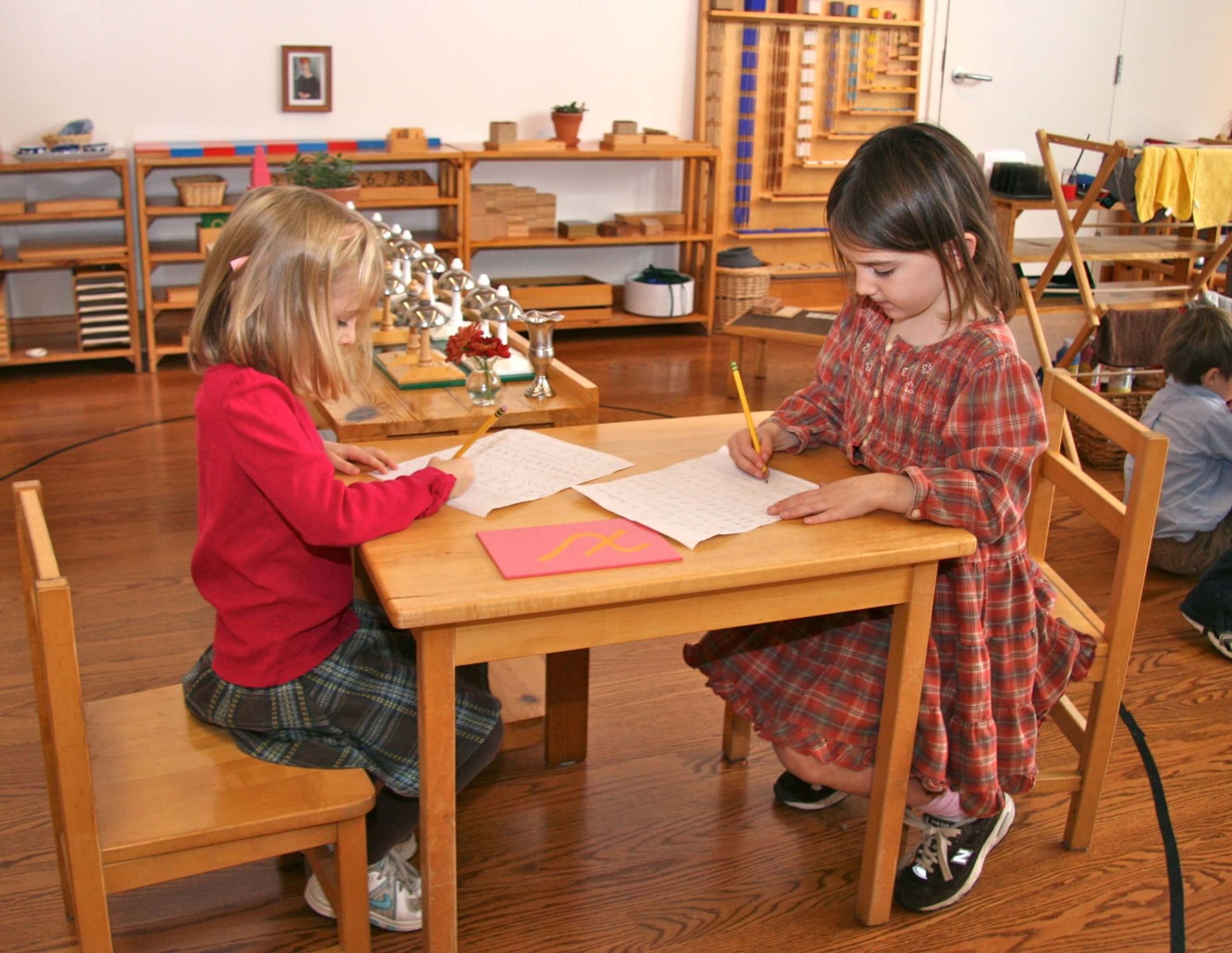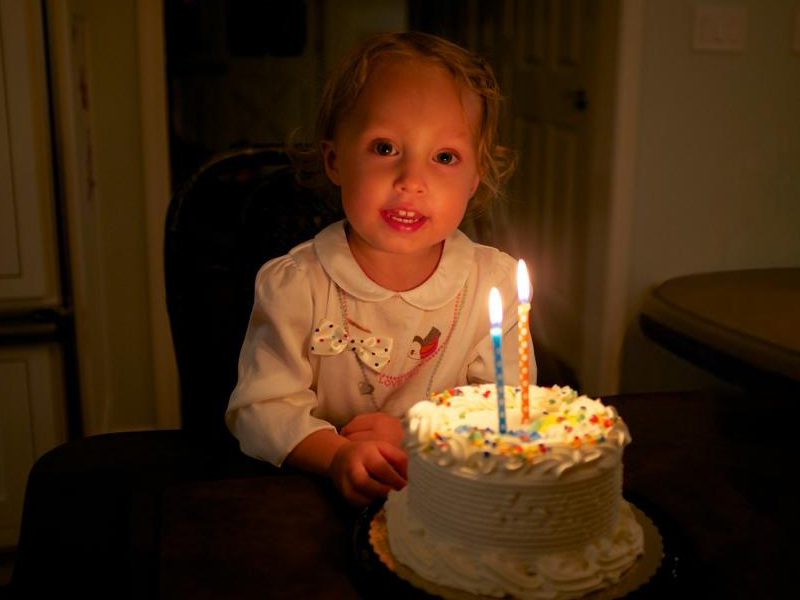
I looked at the calendar on November 1st and it took my breath away. The end of the year is hurtling towards us, and soon its chapter will close. This was our 2020. It was a global pandemic, a resurfacing of racial struggles, and contentious political campaigns followed by a dramatic presidential election.
When our Montessori school first closed on March 13, I had no idea what was ahead of us. It’s hard to even remember who that naive person was. Since then, we have lived with periods of relentless anxiety, and we have also seen extraordinary acts of heroism. We have woken at night fearful about the world we are raising our children in, and we have been moved by profound acts of goodness.
Just as it has been since the beginning of human history, there is joy and sorrow all around us. And as we move towards the end of the year—a time that invites reflection—I find myself considering what this year has meant for our family personally, and where that joy and sorrow have lived.
Before the pandemic, I could have easily listed off qualities of character that we hold in esteem: Resilience, gratitude, empathy, courage, and hope. And then I might even have confidently listed off the ways our family’s practices and language aim to develop those qualities in our children. But what I know now is this: I didn’t know.
Now, we have experienced resilience. We have felt gratitude and empathy. We have witnessed courage. And we have hoped like our lives depended on it. What do we have now that we didn’t have before? We have experience with hardship, disappointment, and suffering.

Maria Montessori knew that adults do not pour intelligence and character into children. Children build these qualities on their own. She observed, “[P]rogress comes from within the child. It is the child who begins to exercise himself; he constructs his own conduct, so that this order becomes a phenomenon of development” (Montessori, 1997, p. 54). To this end, children themselves will progress and develop by means of their own experiences with the world. We cannot do it for them. I can describe the ideals of character to them every day, but they will not truly have them until they find themselves in situations that require them to build this character.
Our family has led lives of great ease and comfort until this year. And while these points of character were somewhat contrived before, they are now embedded in our days and in the ways we engage with our neighbors and the world. How do I know this? I know this because I have seen glimpses in our three children (ages 5.5, 7.5, and 10). We have a long way to go. “No person is ever finished,” my favorite parenting blogger (Simply on Purpose) says. But what this year has given us is the necessity to look deep within ourselves, and build these qualities—resilience, gratitude, empathy, courage, and hope—into our being.
Resilience
As the reality of the pandemic sank in, and we gradually understood how much of our lives would change, and for how long, we all grieved. Our oldest child cried when he learned that our spring break trip was cancelled and that March Madness was cancelled. He sobbed when he learned our family trip to Wisconsin was cancelled, and he cried as though his heart would break as he learned of friends who would no longer be at his school. I, too, cried as I watched weddings and graduation celebrations get called off, and as I understood how my children’s classrooms would be different when school opened in September.
But each sadness gave us the opportunity to watch life go on. Each setback also provided time to recover and the chance to fill life with other ways to connect and love people, and other ways to explore and enjoy our days. Every disappointment told us that we could bear this and that we could carry on. This fall, when I told our son that we were pulling him out of his beloved baseball team because COVID cases were going up in our county, I anticipated tears. Instead, he nodded. “Okay,” he said. My heart broke a little as I watched him in that moment—more grown up than I’d understood him to be, and more resilient than I’d anticipated.
Montessori recognized, “Real freedom… is a consequence of development… Development is active. It is the construction of the personality, reached by effort and one’s own experiences; it is the long road which every child must travel to attain maturity.” Our son had traveled down that long road farther than I’d thought. This year gave him opportunities to develop actively toward maturity. He has knowledge about the world now that he didn’t have before—the many ways it can let you down. But he also has knowledge about himself now that he didn’t have before—the many ways he is resilient enough to handle it.
Gratitude
Gratitude came next. As we watched the pandemic spread through our country and the world, we experienced a visceral gratitude for the state of our own lives. We had an abundance of food and water, we had electricity and central heating, we had access to excellent healthcare, we had a yard to play in, we had books and toys, and we had each other—to talk to and to hug. Throughout quarantine, our youngest child expressed frequent gratitude for the many small pleasures of our daily life. She took time to notice the delights of her present moments. “This food is SO good,” she would report most evenings. “I love Huckleberry SO much,” she told us several times a day (our cute but grumpy and unplayful dog—a real testament to her positive outlook). “I’m SO glad you got me these dolls for my birthday,” she would share with me, as she took them out for the hundredth time that week.
Her practice of gratitude has been a quiet but steady heartbeat in our home. Montessori observed, “The child is the instrument through which everyone comes to love his own corner of the earth” (Montessori, 1996, p. 65). Young children live in such a way that draws them to a loving intimacy with their environment. As the larger and more exciting activities are unavailable to us, we have no choice but to look closer for joy. We have an opportunity to focus on what is near to us. Watching our littlest one enjoy the often unnoticed elements of her life moves us to do the same. Our family has so much. And now we have a practice of gratitude to connect us to all that is right in front of us.

Empathy
June brought about an awakening for much of the world to the racial struggles that Black and Brown skinned people experience every day. In our own home, we reflected on the ways we have been a part of this system, and we sought to begin righting wrongs by educating our children in age-appropriate ways. We walk a fine line of wanting our children to have the freedom to be little, but also giving them age-appropriate facts about the world and empowering them to do more when they can. This is a deeply personal line—unique to every family, based on individual beliefs, children’s temperaments, and parents’ observations.
Our middle child felt these conversations deeply. Montessori recognized that the elementary child asks themselves, “Do we merely live here for ourselves, or is there something more for us to do?” (Montessori, M., 1991, p. 10). In this moment, our daughter believed there was something more for her to do. She absorbed the stories we read to her and the way we explained what was happening in the world, and she took those feelings and got to work. She asked if there were jobs she could do in our house and yard to earn money, and when she was finished, she asked us to send the money to families who needed it.
In the Montessori classroom, children have great freedom to choose productive work. They do not experience much resistance when they have relevant ideas for purposeful activities.
Empathy is a powerful tool. It allowed our daughter to feel the suffering of others. And because she also has energy and autonomy, developed in her Montessori environment, she was able to transform her feelings into acts of kindness—an empowering and productive service.
In normal times, we are consumed in our daily lives. We hear passing stories of others’ pain and then our attention returns to demands of our own days. This year created an expansion of space and time to reflect on other people’s lives. With nothing else to distract us, our empathy grew. And through the deepening of this quality, accompanied by autonomy, our moral compass directs us with kindness and intention into acts of service.
Courage
After Illinois’ quarantine, our children were used to staying in our house and social distancing. Our son expressed anxiety about returning to normal activity. “It won’t feel right,” he kept saying. Even after the summer, and despite our reassurance, he was nervous about the ways school would be different from how it was before, and also being around so many people in an indoor space.
“There’s a difference between living and just surviving,” my high school physics teacher told me. Allowing our fears to control our actions reduces our lives to survival. It takes courage to transition out of what feels absolutely safe into a life with measured risk. Montessori wrote, “The important thing to develop in the child is courage… What is important is not to take a second step, but the effort that is made to walk.” (Montessori, 1994, pp. 306-307). With this in mind, we made no promises about the world, but we encouraged our son to take the first step. We explained to him that scientists believed that children were not at increased risk for COVID, that everyone would be wearing masks and social distancing, that windows would be open and he could work outdoors, and that humans were remarkably adaptable.
We also explained that life was for living. That courage was a tool for carrying on. The pandemic brought elevated vigilance into our lives. It brought sustained concerns about the health and safety of ourselves and others. We couldn’t make our son’s anxiety go away. But we could remind him that he already had a tool to overcome it. He brought courage with him on that first day in August. He felt his own strength and capabilities as he faced a fear. And the courage he carried with him became his own.

Hope
Hope has been the most elusive, the most amorphous, quality we’ve cultured in 2020. As our life as we had known it was essentially cancelled, we stopped making plans. It became too painful to look forward to something in the near future only to have to call it off. Life became stagnant. We stopped hoping. In the past, I had understood hope as something specific that I wished would happen. I saw hope as something that could be managed, something that could be dashed, something that could fall. Hope felt out of my control.
But what is hope? What is hope when you don’t know what tomorrow will look like? What is hope when the world looks dismal? Perhaps hope is a faith in a better future, even when we don’t know what it holds. Perhaps hope is a belief that light will follow darkness, even when we don’t know when or where the light will shine. And perhaps hope is holding all possible outcomes lightly, and knowing that we have the qualities we need to carry us to that brighter future.
So where does that leave my family? Montessori’s entire curriculum was designed with a belief in the possibility of a better future. The very nature of her work with children is full of hope. She wrote, “The child is both a hope and a promise for mankind” (Montessori, 2007, p. 31). Our hope now is not confined to specific scenarios—hoping that something will or won’t happen. Now hope strengthens us and tells us that just as life can bring unimaginable despair, it can also bring unimaginable joy.
Final Thoughts
In days of bounty, happiness is plentiful. Wellness teacher, Dr. Matthew Dewar, reminds us that the summer brings easy joy. It surrounds us. It comes to us easily. The joy in winter is harder to find. We work for every bit of it. We earn our winter joy through the contrasts—the coldness of the air against the warmth of the fire, the bareness of the trees and sky against the light of our homes. We have to use our own efforts to move ourselves from bleakness into that life-giving place that brings joy.
This year, our meteorological winter coincides with the winter of the pandemic. It is darker, colder, and bleaker. Joy won’t come as easily as it did in the summers of our lives. We will have to move ourselves from despair into possibility.
Montessori wrote, “Joy in life together with discipline seems to be more the result of… activities guided from within than from any outer circumstance” (Montessori, 1996, p. 43). This joy that we work for, the joy that we earn, the joy that we build through our character, is a deep and empowering joy. This joy, founded on qualities like resilience, gratitude, empathy, courage, and hope, is a joy we will keep. This joy will fuse into the cells of our body and sustain us for the uncertain road ahead—and carry us to an unknown, but hopefully brighter, future.
References
Montessori, M. (1991). To educate the human potential. Madras, India: Kalakshetra Press.
Montessori, M. (1994). Creative development in the child II (R. Ramachandran, Trans.). Madras, India: Kalakshetra Press.
Montessori, M. (1995). The absorbent mind. New York, New York: Henry Holt and Company, LLC.
Montessori, M. (1996). The formation of man. Oxford: Clio.
Montessori, M. (1997). The California lectures of Maria Montesori, 1915. Oxford: Clio.
Montessori, M. (2007). Education and peace. Amsterdam: Montessori-Pierson Publishing.


